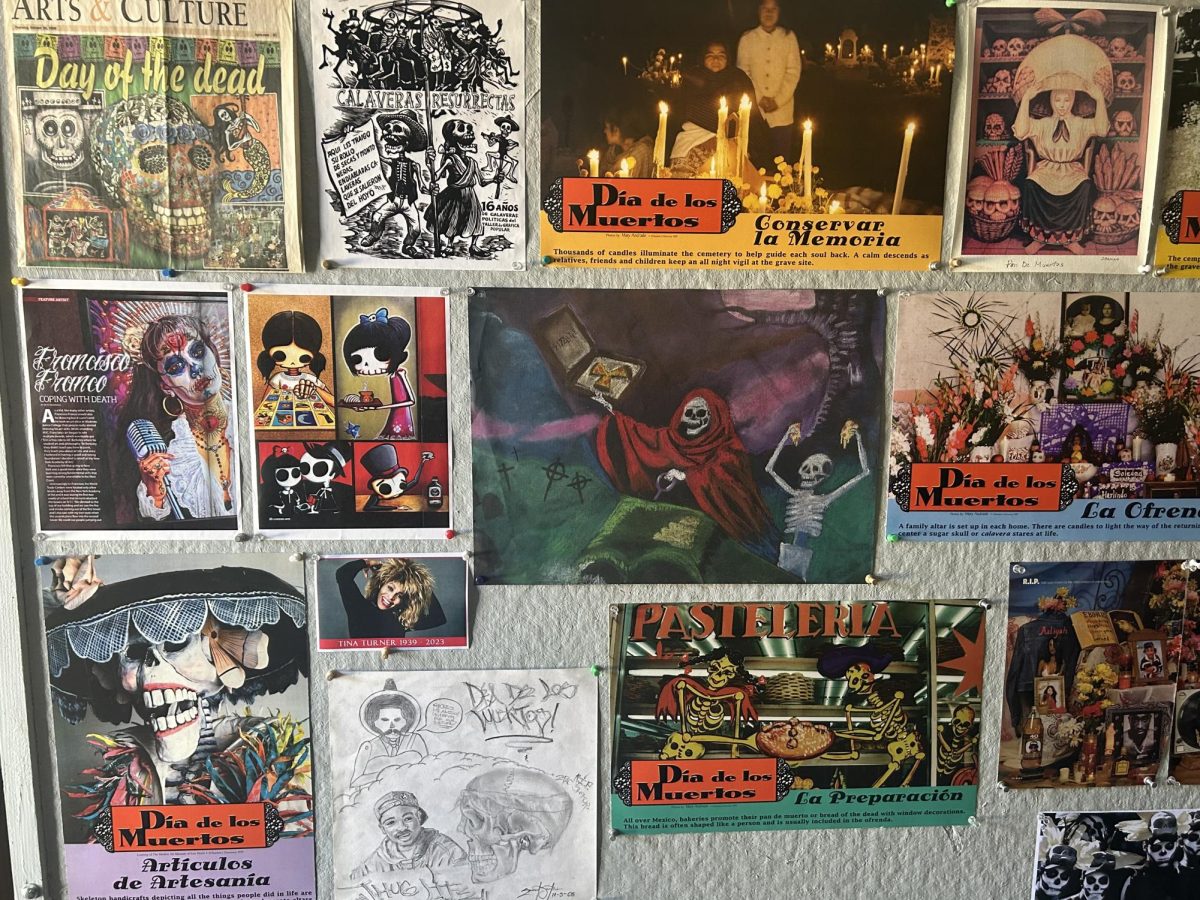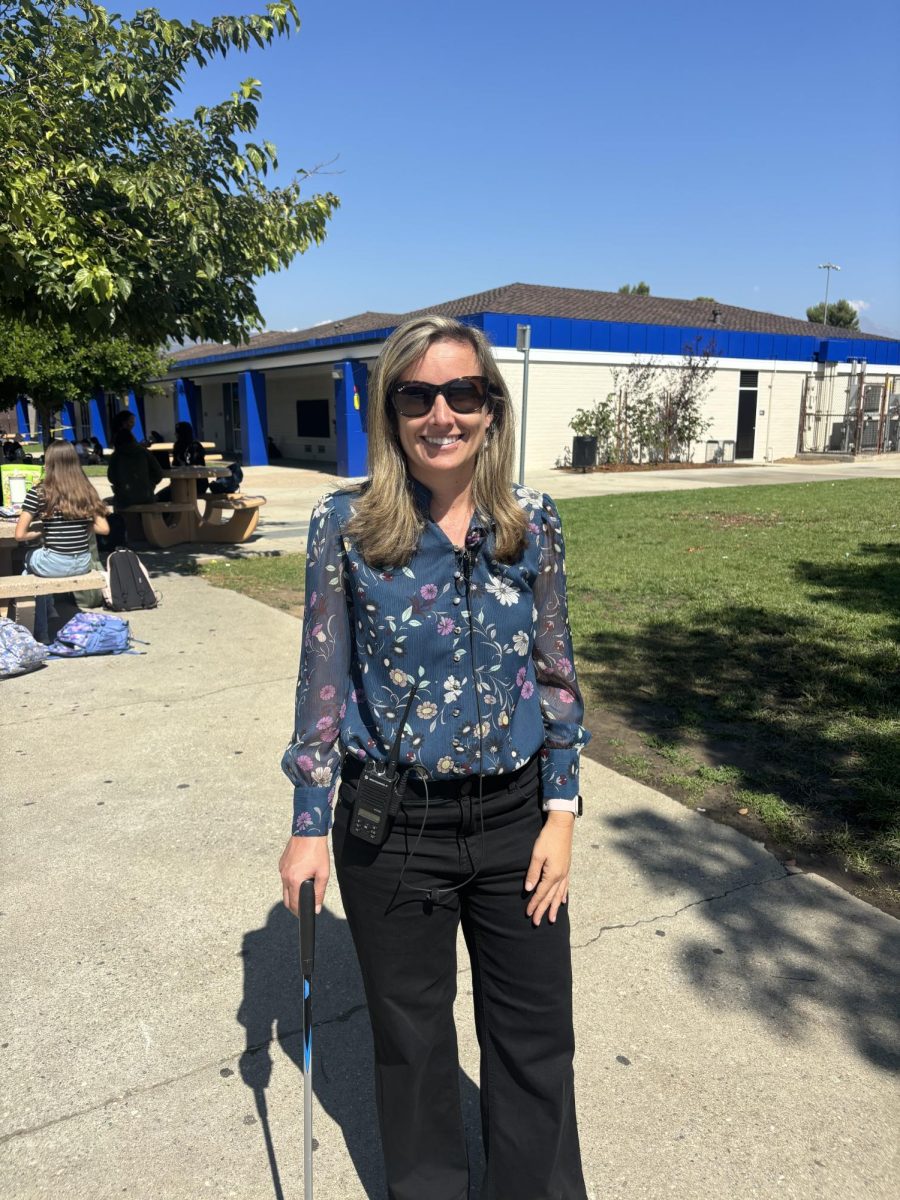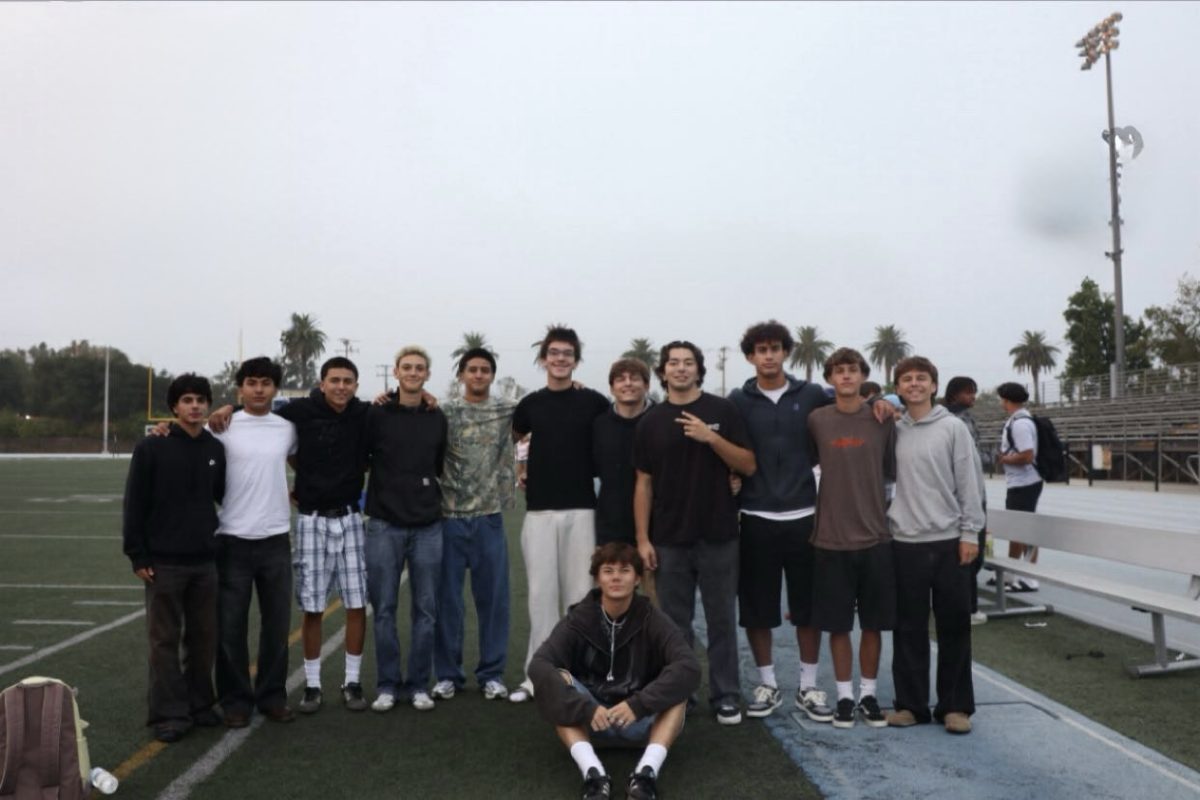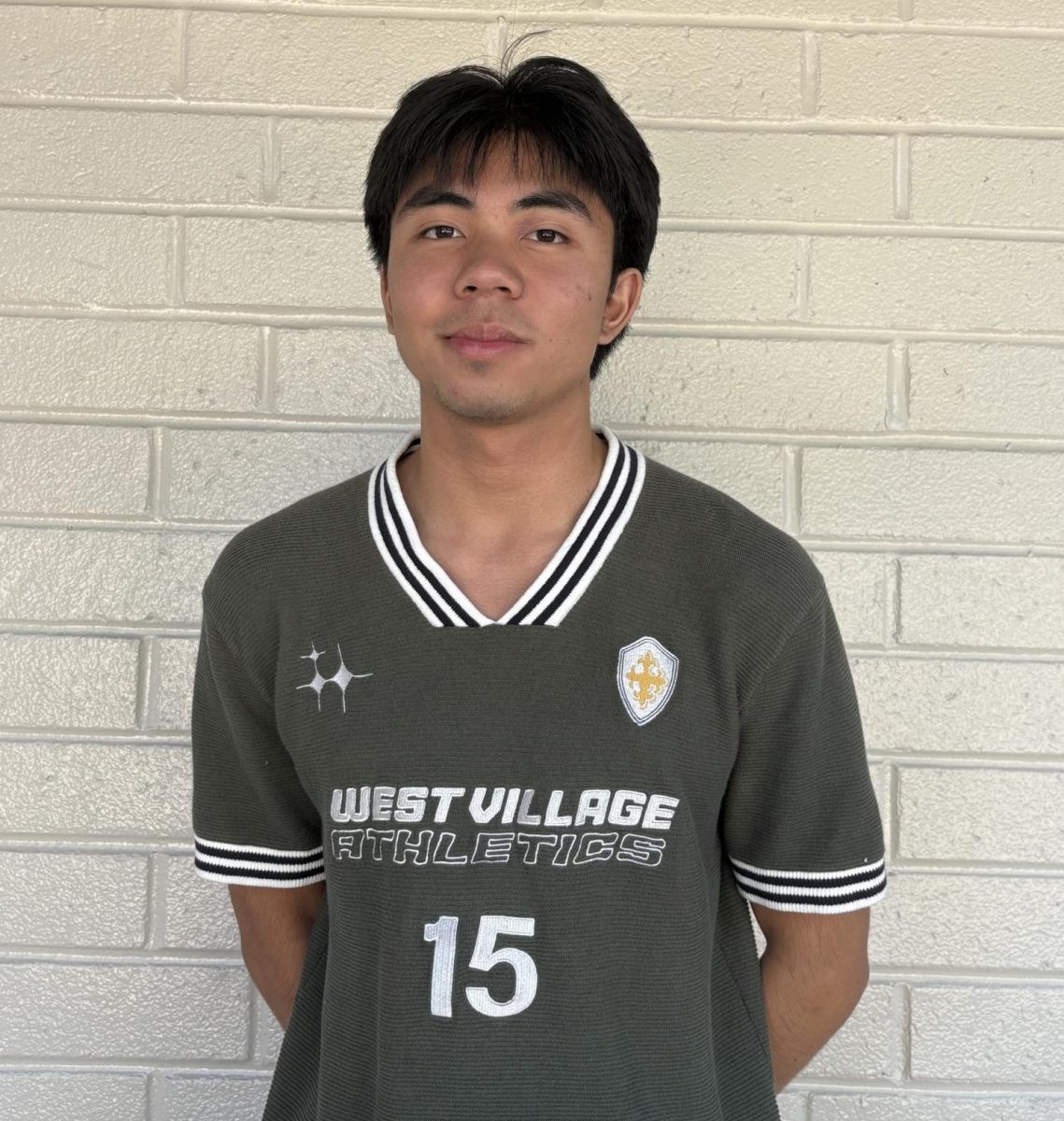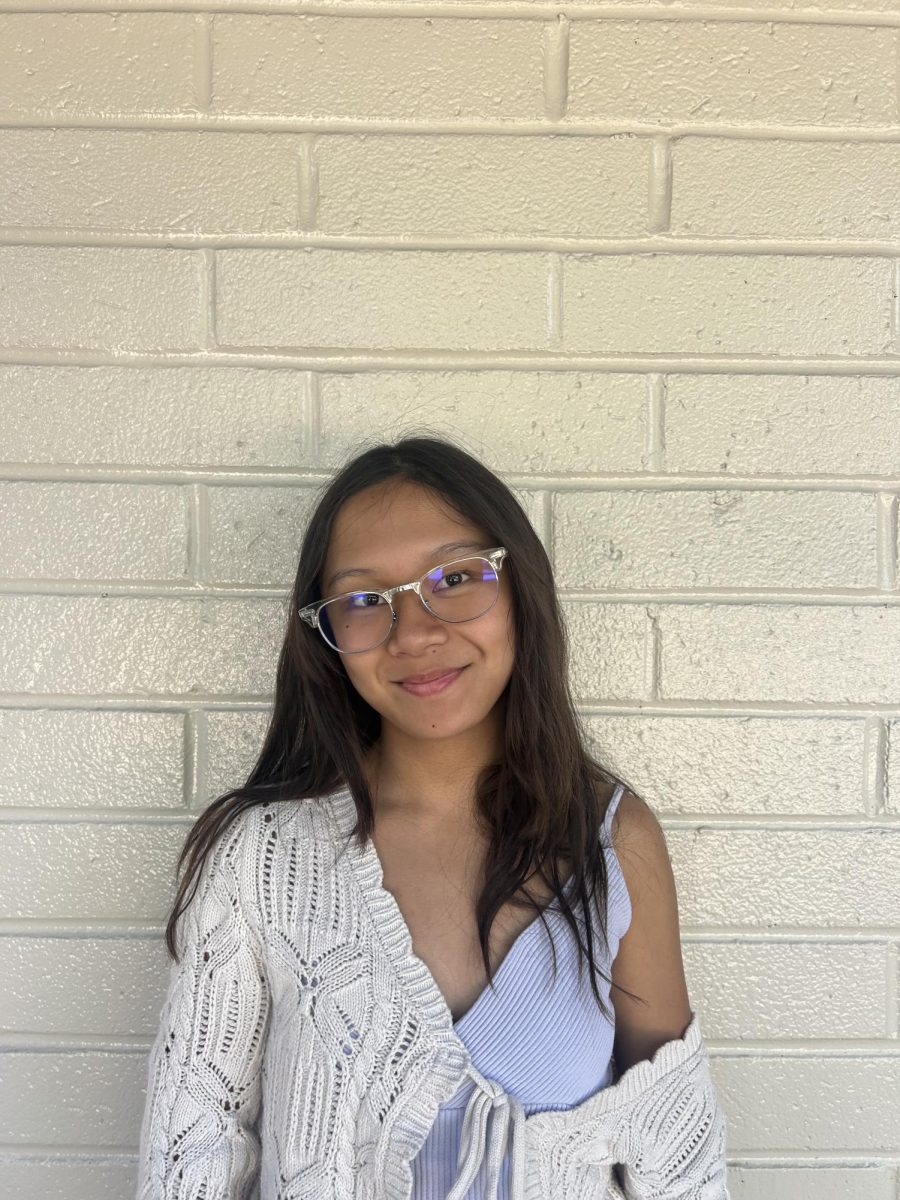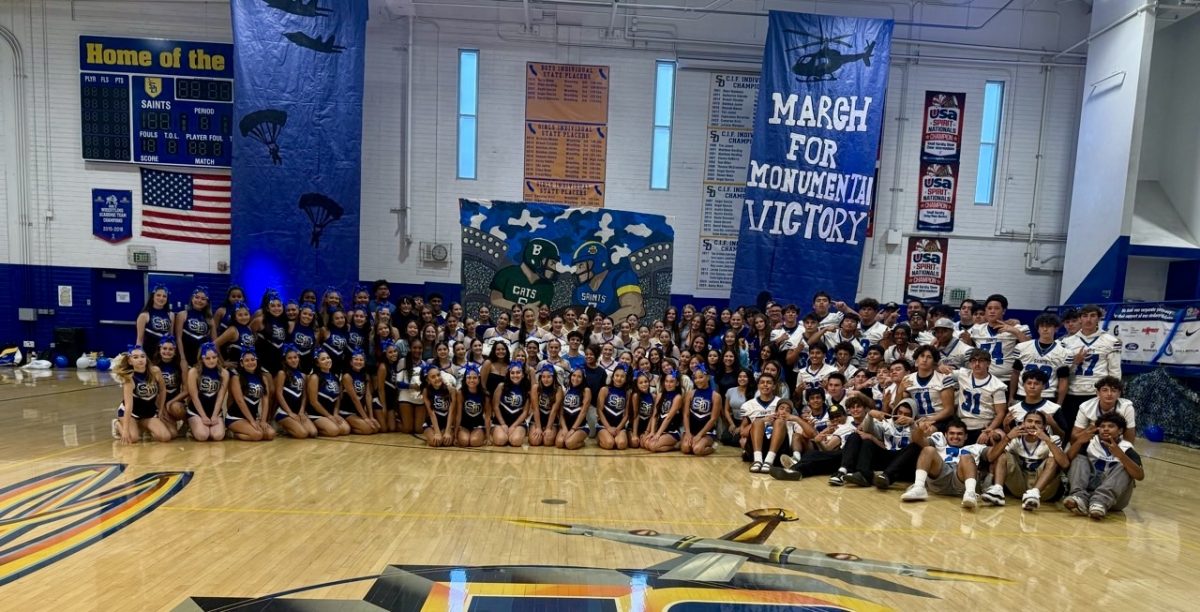Day of the Dead is a culturally significant celebration that welcomes back ancestors and loved ones who are no longer with us, celebrated on November 1st and 2nd. This year San Dimas High School orchestrated various activities and forms of decor to honor and commemorate the Mexican holiday indulged in traditional adornment.
To San Dimas, it’s imperative to celebrate the campus culture, and one way to express this is through art. 20 years ago there was no trace of remembrance for a holiday of this sort, but nowadays, it’s a different story.
In an interview with the Spanish Honors Society Advisor, Ms.Valencia credited her club’s members for the Dia de Los Muertos decor and other student volunteers who helped accessorize the quad. She personally would celebrate the day “Before Covid I had a party with music, dancing, face-painting, a taco-man, just kind of celebrating the culture.” Ms.Valencia currently celebrates by making an ofrenda at home and puts pictures of deceased loved ones to honor them.
Day of the Dead ofrendas, or altars, are structures dedicated to the deceased where gifts and offerings are placed to guide their spirits back to the living. To greet their souls home decorated with marigolds, favorite dishes like tamales or tortillas or another delicious option, candles, incense, toys and other enticements, personal objects and pictures. Some people lay paths of flower petals to direct the dead to home altars.
San Dimas made an altar on the stage in front of the bell tower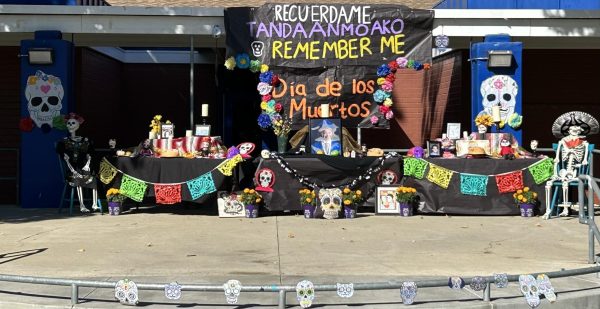 , there were pictures of staff’s deceased loved ones, old teachers, and substitutes who had passed.
, there were pictures of staff’s deceased loved ones, old teachers, and substitutes who had passed.
Dia de Los Muertos can help those who celebrate to deal with feelings of grief, as it has a very emotionally vulnerable meaning. Still, without having these feelings of discomfort, there is no way to grow out of the grieving stage without processing the pain and being able to let go of a loved one.
Counselor Mrs. Bravo didn’t consistently celebrate Dia de Los Muertos until 5 years ago. When a few of her family members passed away, she began to celebrate Dia de Los Muertos, and in her view, “It is sad, but you celebrate in such a happy, colorful way that it makes you remember your past ones in a good way.” For Mrs. Bravo, it’s mostly thoughts of old memories with those she loved rather than the thought of them being passed on.
For Mrs. Bravo’s first year here during Dia de Los Muertos at San Dimas and being from different districts, she loved the decors’ ability to capture the day and Mexican culture. She said the display was beautiful and she was surprised. “Personally, I think our school did an amazing job capturing that day.” Another celebratory aspect she depicted as beautiful was Mr. Black’s art gallery.
The Art teacher Mr. Black had a Dia de Los Muertos art gallery showcasing pieces of his students with fine artistic ability.
For Mr. Black’s art class, there are two different types of projects: traditional Day of the Dead art, an example being Calaveras, and the other type of project, “memorials, which take maturity because you have to think about somebody who has passed away.”
Senior, Estela Alvarado’s artwork was displayed in the art gallery, her painting was a Calaveras couple. The Calaveras man was proposing with the words ‘mi vida’ and ‘I love you’ written on her piece. “I draw what came to my mind when Mr. Black told us the assignment,” When told the project was about the Day of the Dead Estela thought of love and someone proposing so that’s what she drew.
In San Dimas’ morning announcement videos, there was a summary of what the Day of the Dead is and what it celebrates. ASB also delivered Calaveras (sugar skulls) to classrooms that could be colored to put them on the school’s ofrenda. Some Calaveras were shaped like animals for students who wanted to honor deceased pets on the schools ofrenda.
Esquites were sold during Dia de Los Muertos because Mexican food is an integral part of Mexican culture making it significant to the holiday. Food plays an important role in Dia de Los Muertos because people use Mexican food as offerings on ofrendas.
All decorations and festivities directed by San Dimas showcase additional efforts to further educate and include students aware or unaware of the Day of the Dead. This cultural meaningful holiday was an excellent exclusive example of how to appreciate the Mexican student body on campus.



